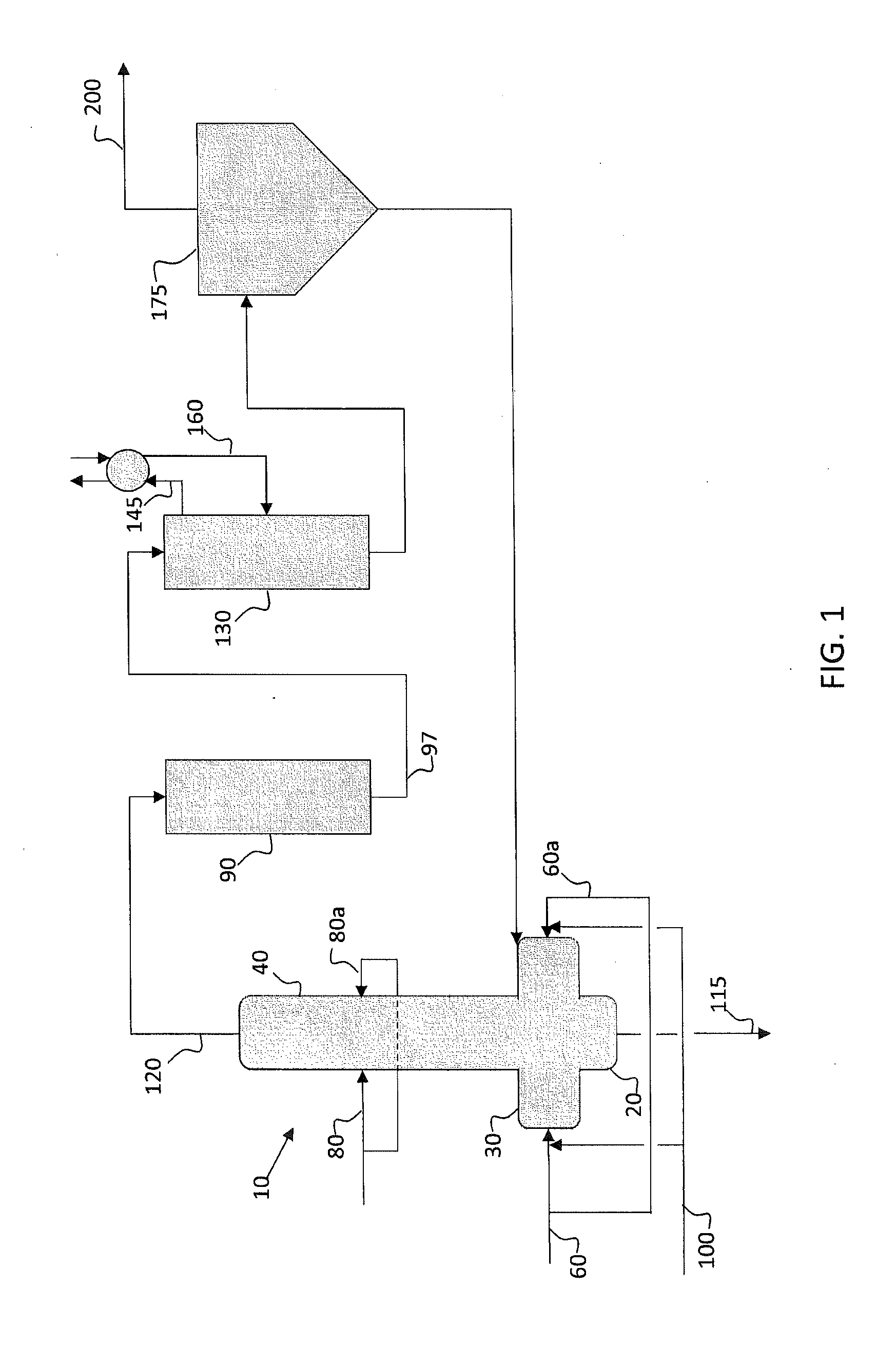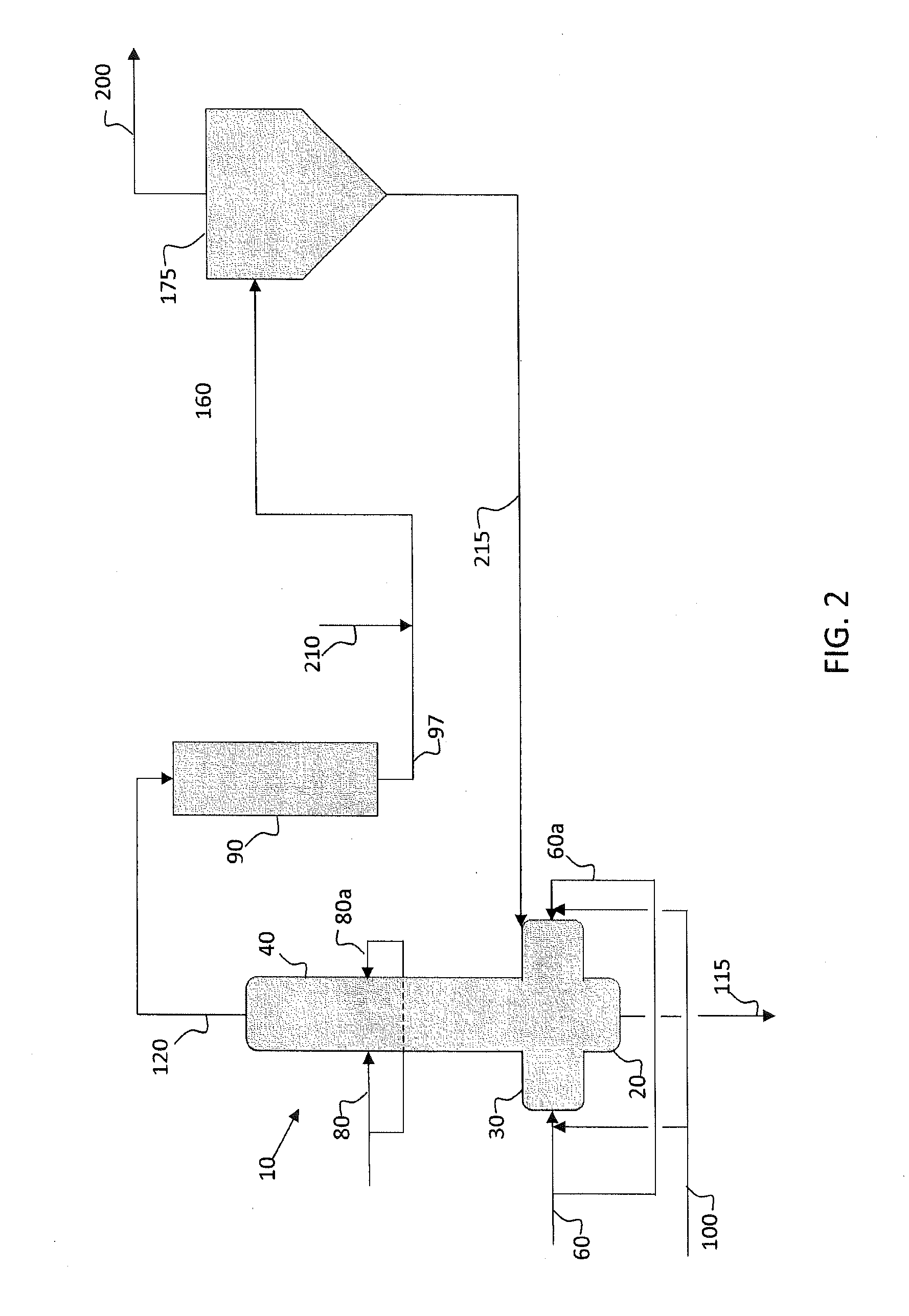Two stage gasification with dual quench
- Summary
- Abstract
- Description
- Claims
- Application Information
AI Technical Summary
Benefits of technology
Problems solved by technology
Method used
Image
Examples
example 1
[0040]Detailed computer modeling was performed to assess the effect of implementing the inventive systems and processes on overall operational efficiency and cost. The test case was a two-stage gasifier (as described herein) with a capacity of 6,733 short tons per day of petroleum coke as feedstock. The results of the modeling indicated that overall gasifier performance does not appreciably change, and the raw syngas produced from the gasifier is of very similar composition to that shown in Table 1. In fact, most components differed by less than 1% on a mole basis.
[0041]The major difference detected was in the steam and water balance of the conventional system versus the system of the current disclosure. Implementing the inventive systems described herein with a direct quench of the near-zero tar syngas to a temperature of 1000° F. resulted in the loss of all the saturated high pressure steam that would otherwise have been produced by the HTHRU as it cooled the near-zero-tar syngas....
example 2
[0042]System reliability (i.e., operational availability) is a crucial factor in determining the commercial viability of gasification systems. Therefore, a detailed comparison was conducted between an embodiment of the systems and processes described herein, and a conventional two-stage gasification system utilizing the EGas™ technology (owned by Lummus Technology Inc.) to calculate any effect on system availability. The test case compared two Integrated Gasification Combined Cycle (IGCC) systems, each system comprising two online gasifiers with no back-up. Preventive maintenance is normally performed every 180 days to inspect and maintain the gasifiers. However, conventional IGCC systems that utilize a HTHRU were determined to require more frequent maintenance, on the order of every 90 days. In this hypothetical scenario, the availability of the inventive system designed as disclosed herein was 6.6% greater than the conventional system design.
example 3
[0043]Calculations were performed to determine the economics of implementing the systems and processes described herein. The inventive systems and processes do not require an HTHRU, which is a costly piece of equipment to both build and maintain. A detailed analysis was performed that included the savings in capital expense, expected income tax rate, financial depreciation, and expected inflation rate. The calculated overall savings due to implementing the inventive systems and processes disclosed herein resulted in an internal rate of return of 3.9% over the expected 25 year lifespan of the system.
PUM
 Login to View More
Login to View More Abstract
Description
Claims
Application Information
 Login to View More
Login to View More - R&D
- Intellectual Property
- Life Sciences
- Materials
- Tech Scout
- Unparalleled Data Quality
- Higher Quality Content
- 60% Fewer Hallucinations
Browse by: Latest US Patents, China's latest patents, Technical Efficacy Thesaurus, Application Domain, Technology Topic, Popular Technical Reports.
© 2025 PatSnap. All rights reserved.Legal|Privacy policy|Modern Slavery Act Transparency Statement|Sitemap|About US| Contact US: help@patsnap.com


